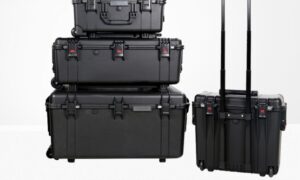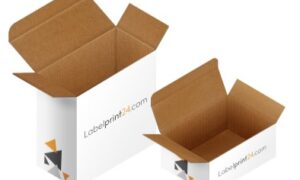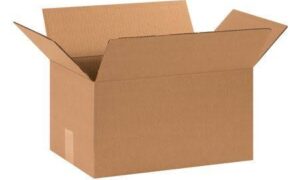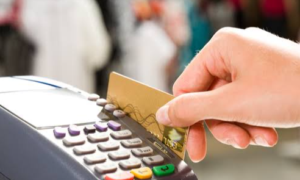As more and more people become concerned about sustainability, packaging has taken on a more significant role in the circular economy. While food packaging is essential for keeping products fresh and convenient for customers, it also contributes to food waste and harms the environment.
This article looks at how sustainable packaging practices can help businesses align with the principles of the circular economy, leading to greater resource efficiency and less waste. By adopting these practices, companies can positively impact the environment and help create a more sustainable future.
What Is a Circular Economy?
A circular economy is an economic model that aims to minimize waste and maximize the use of resources through continuous cycles of reuse, recycling, and regeneration.
In contrast to the traditional linear economy, which follows a “take-make-dispose” approach, a circular economy focuses on designing out waste and pollution, keeping products and materials in use for as long as possible. It emphasizes the importance of resource efficiency, product durability, repairability, and the adoption of renewable energy sources.
By transitioning to such, we can reduce environmental impact, conserve natural resources, and create a more sustainable and resilient economy that benefits businesses and the environment.
What Is the Role of Packaging in Circular Economy?
The role of packaging in the circular economy is to minimize waste and maximize resource efficiency. Here, wrappers are designed and managed to promote reuse, recycling, and the efficient use of resources.
Conventional plastics, on the other hand, are often discarded after use in a linear economy. This contributes to environmental pollution and plastic packaging waste. By adopting eco-conscious packaging practices, businesses can reduce waste, utilize recyclable materials, and optimize the supply chain. Packaging in the circular economy aims to create a closed-loop system where materials are continuously cycled and reused, minimizing the environmental impact and creating a more sustainable future.
Designing Packaging for Reuse and Recycling
Rethinking packaging to contribute to waste reduction and the composting process is commercially viable. Incorporating eco-design principles and new packaging technologies can create packaging with easily recyclable or reusable materials.
Unlike plastic packaging, this approach ensures that materials can be recovered, processed, and reintroduced into the production cycle, minimizing waste and maximizing resource efficiency.
Optimizing the Supply Chain through Sustainable Packaging
Eco-friendly packaging involves optimizing the entire supply chain. Packaging manufacturers are dedicated to minimizing packaging, utilizing lightweight and practical materials, and enhancing logistics and transportation processes.
By optimizing this process, businesses can minimize packaging waste, reduce energy consumption, and lower greenhouse gas emissions, contributing to a more sustainable and resource-efficient system.
Promoting Consumer Engagement and Behavior Change
Packaging also plays a role in promoting consumer engagement and behavior change. Through clear and informative labeling, consumers can make informed choices about circular packaging resolutions and understand how to dispose of packaging supplies properly.
By raising awareness and educating consumers about the benefits of the circular economy and the importance of responsible packaging practices, we can encourage more sustainable consumption patterns and foster a culture of recycling and reuse.
Enabling Closed-Loop Systems and Resource Efficiency
Circular economy packaging enables closed-loop systems and resource efficiency by designing packaging solutions that support the continuous circulation of materials. Eco-friendly packaging items, such as compostable packaging and recycled packaging, reduce packaging waste and eliminate waste materials in landfills.
By incorporating circular economy packaging principles, such as using biodegradable materials and optimizing packaging materials, the packaging industry promotes resource efficiency and minimizes reliance on finite resources.
Through closed-loop recycling, materials, including plastics, can be recovered, processed, and reintroduced into the production cycle, reducing the demand for virgin materials and mitigating plastic pollution.
Developing recycling infrastructure and adopting regenerative practices in waste management also create a circular model where materials are efficiently recovered, recycled, and reused.
Advancing the Circular Economy through Green Paper Products
As a marketplace for packaging innovations, Green Paper Products plays a significant role in advancing the circular economy. Here’s how:
Providing Eco-friendly Packaging Alternatives
Green Paper Products offer eco-conscious packaging alternatives that align with the principles of the circular economy. These products are made from renewable resources and are designed to be compostable or recyclable. Green Paper Products contribute to reducing waste and promoting the efficient use of resources by providing circular packaging options for food and beverages.
Supporting the Transition to Closed-loop Systems
Green Paper Products facilitate the transition to closed-loop systems by offering packaging solutions that can be easily recycled or composted. They help create a sustainable ecosystem where materials can be recovered, processed and reintroduced into the production cycle without losing value.
Encouraging Collaboration and Innovation
As a marketplace for sustainable options, Green Paper Products bring together manufacturers, suppliers, and businesses that prioritize environmentally friendly packaging practices. This platform encourages collaboration and fosters innovation in developing new packaging solutions that are both sustainable and functional.
Green Paper Products contribute to continuously improving circular packaging solutions by facilitating knowledge exchange and promoting best practices.
FAQs
What are examples of circular economy?
There are several examples of circular economy principles applied to food packaging. One example is compostable packaging from renewable materials like plant fibers or bioplastics.
Another example is the implementation of refillable packaging systems, where consumers can return empty containers to be cleaned, refilled, and reused. This reduces the need for single-use packaging and minimizes waste.
Additionally, recycling programs for packaging items like glass, paper, and metal promote the recycling and reuse of these materials, reducing resource consumption and environmental impact.
What is the circular economy in packaging?
Circular economy in packaging refers to adopting principles and practices that aim to minimize waste and maximize resource efficiency throughout the lifecycle of packaging supplies. It involves designing packaging for durability, reusability, and recyclability and implementing effective collection, sorting, and recycling systems.
Packaging items are kept in continuous cycles of use, where they are recovered, processed, and reintroduced into the production cycle rather than discarded as waste. This approach reduces the reliance on virgin resources, minimizes environmental impact, and promotes a more sustainable and circular system where materials are reused, recycled, and regenerated.



































